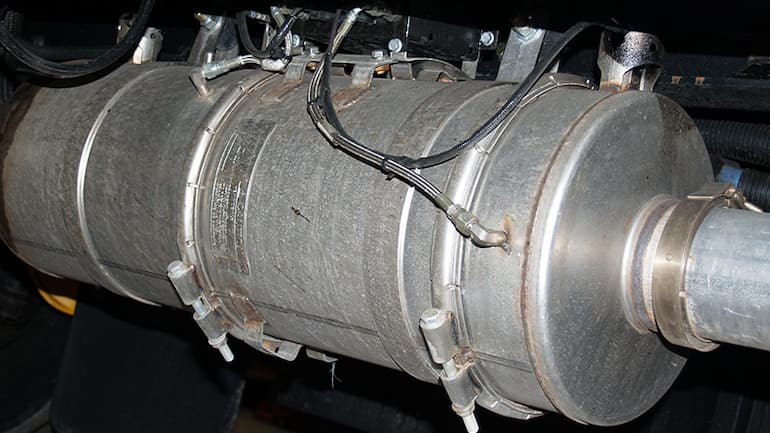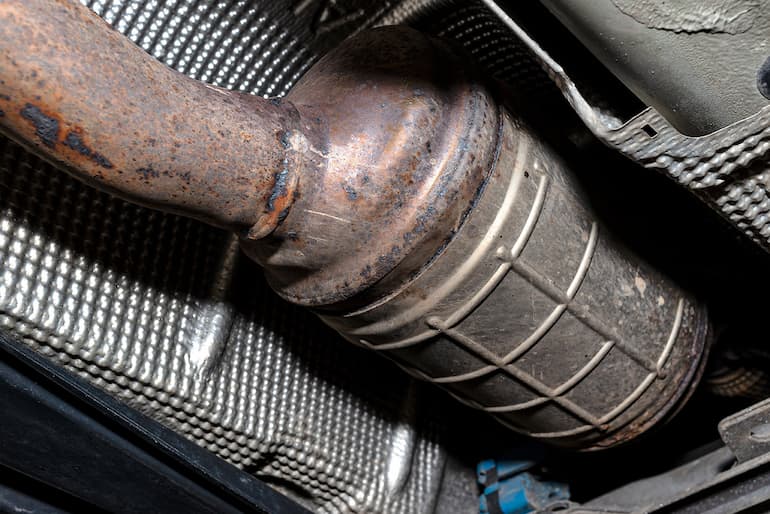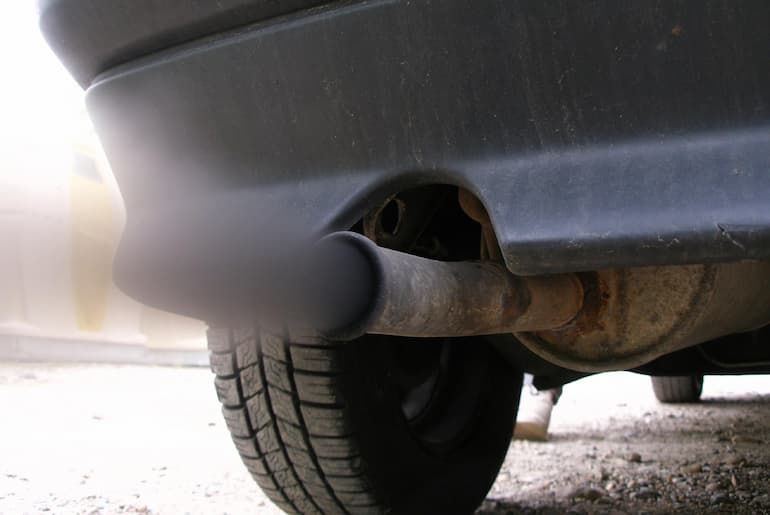Few activities are as exhilarating as installing a slew of new exhaust parts. You don’t always have the luxury of replacing them strictly at your convenience, though; and that’s usually the case with diesel particulate filters.
Diesel particulate filters (DPFs), and combination DPF/catalytic converters are designed to effectively filter out and burn off the sooty particulates produced by diesel-powered engines. And while DPFs have only become a serious Aussie requirement over the last decade with the adoption of Euro 5 emission standards, they’ve been installed on a wide range of cars and trucks for nearly 2 decades.
Because of their environmental impact, DPFs need to be replaced when they’re no longer able to burn off (regenerate) soot. The trend, however, isn’t just to settle for a standard OE replacement filter, but to wisely invest in one that can perform twice as well as an OE unit.
Time to Consider Upgrading Your DPF to a High-Flow Aftermarket Unit

It doesn’t matter if you’re upgrading your entire exhaust system, or simply replacing a DPF that your OBD-2 is warning is defective, stepping up to a high-flow replacement DPF filter makes sense. High-flow DPFs not only optimize the crucial filtering and regenerating functions, but they also allow better exhaust flow than their OE counterparts, and better flow through the exhaust means more power at the wheels.
With a flow efficiency >95%, a new high-flow aftermarket DPF gives you features that include:
- High precision CNC manufactured components;
- A TIG-welded, stainless steel housing; and,
- Silicone Carbide (SiC) or Cordierite (Crd) filter substrates.
With a high-flow DPF exhaust filter, you’re going to see an immediate difference in your vehicle’s responsiveness, especially if you own a high-performance diesel or turbo diesel. The reduction in harmful particulate emissions is also going to keep your neighbours, your ECU, and traffic inspectors happy too.
Recognizing the Signs That Your Factory DPF is in Trouble

Perhaps the most important thing to understand about your vehicle’s DPF system is that it doesn’t function independently. Unlike the flow-through characteristic of catalytic converters that allows them to alter the composition of exhaust gases, DPF filters are responsible for physically trapping sooty exhaust particulates and preventing them from being released into the atmosphere. The particulates are then cleared from the DPF by either passive regeneration (burning during normal driving) or active regeneration (when the ECU intercedes to expedite burning).
Not unlike any other type of filter though, once these particulate filters become clogged, your vehicle will very likely have to face a range of unwanted upstream problems, including:
- An increase in engine idle speed with a corresponding decrease in engine power;
- A noticeable increase in fuel consumption; and,
- A hot, persistent smell of raw emissions from the tailpipe.
And if your vehicle is turbocharged, the excessive backpressure created by a blocked diesel particulate filter can also have a catastrophic impact on the turbo, including:
- Wastegate failure due to uncontrollable boost pressures;
- Oil leaks, and carbonized oil buildup on shafts and bearings; and,
- Turbine seizure, or complete failure due to increased temperatures and metal fatigue.
The fact is, by continuing to drive with a defective DPF, not only do your emissions increase as the engine fights to overcome the buildup in backpressure, but the damage done to turbos, fuel injectors, and the engine itself can be significant. Replacing a failing OE particulate filter may seem like a costly investment at first, but make no mistake: it’s a long-term cost-saver.
Some of the Leading Causes Behind DPF Filter Failure
Although the indicators of a possible DPF exhaust problem are likely to appear well in advance of your ECU throwing up warning lights, it’s crucial to keep in mind that while diesel particulate filters aren’t designed to last forever, a DPF problem is usually the result of some other malady. Exhaust systems are surprisingly delicate, and your DPF can easily become the victim of:
- A faulty exhaust sensor. A fault or failure in any upstream sensor from the DPF will affect the ECU’s ability to accurately estimate when active regeneration should be initiated, leading to the DPF clogging up.
- An exhaust gas recirculation (EGR) valve problem. An EGR valve that’s faulty, or begins to stick in the OPEN position as a result of dirt or particulate buildup, will invariably lead to the DPF also becoming clogged with soot.
- Leaking fuel injectors. Leaking injectors are almost undetectable, and the persistent introduction of even small amounts of unintended fuel into the engine increases the production of DPF-clogging soot.
And these aren’t the only causes of DPF particulate filter problems. Even not driving your vehicle far enough or long enough for regular passive regeneration to take place can result in soot buildups that are impossible to clear. Ideally, you want to address any technical problems that your OBD-2, or a routine service detects; and as a follow-up, you don’t want to ignore the need to invest in a new aftermarket DPF exhaust system when it’s time.
Adopt a Driving Routine That’ll Help Your DPF Last Longer

Let’s face it: even after you’ve installed a high-flow aftermarket DPF, there are still a lot of factors that can impact what you can expect from it. Those factors begin with your driving habits, and they include:
- Your driving style, along with the speeds and distances you normally travel;
- The types of loads and stresses that your engine normally operates under; and,
- The type and quality of the fuel you use, and even how low you allow your tank to get.
Fortunately, with today’s new aftermarket DPF filters, lifespans of 175k – 200k kilometres aren’t unreasonable with proper care and vigilance. The fact is, the best preventive maintenance step you can take when you buy a new DPF is to drive your car or truck regularly enough to ensure that both passive and active regeneration have a chance to take place. It’s a simple step, but it’ll help your diesel DPF stay in top working order.
The Final Word
At the end of the day, while upgrading your vehicle’s DPF may seem like an expensive undertaking, here’s a fact: the cost of a new unit is still far less than what you could end up spending on even costlier engine repairs. Depending on which state you live in, removing or tampering with a defective DPF can even bring fines in the 10s of thousands of dollars.
A new, high-flow replacement DPF filter is all you need to avoid a lot of unnecessary headaches. Your car or truck will perform noticeably better than it ever did with the OE unit, and it’ll give you years of fault-free operation with regular driving and regeneration.

